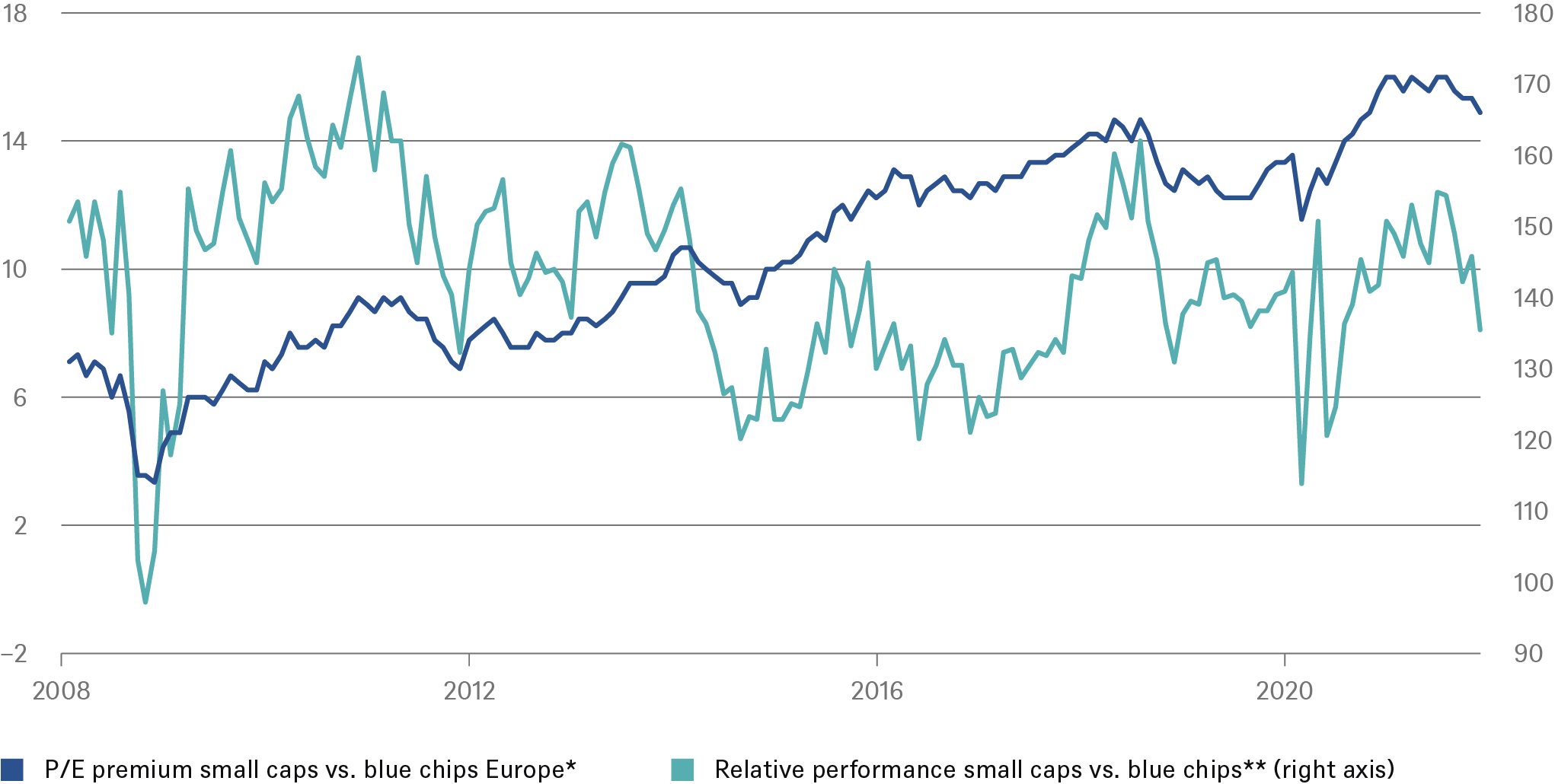Since the debt crisis of 2008, Europe's stock markets have been overshadowed by the dominating U.S. market. Rightly so as many may say, since Europe's equities (Stoxx 600) have gained only around 35% over the past 15 years[1], while the S&P 500 has more than tripled in euro terms. In the end, this resulted in a record valuation[2] discount of over 30% for Europe's stocks. But since mid-202223, the “Old Continent” has been making up ground. This may have less to do with the fact that the economy here is doing so splendidly, but rather that investors overestimated Europe's risks and America's economy.
Europe: small caps vs. blue chips
basis points

Source: DWS Investment GmbH, FactSet Research Systems Inc. as of 2/28/23
Europe's race to catch up was probably triggered by the absence of an energy bottleneck in the winter and the generally higher-than-expected resilience of companies. We believe there are good reasons for the catch up to continue. Macroeconomic reasons (fiscal stimulus will be positive in Europe this year, but negative in the U.S.), but mainly equity market-specific reasons:
- The valuation discount remains at 26%, well above its 20-year average of 14%.
- We expect a greater need for downward revisions for U.S. than for European earnings estimates over the year.
- The sector composition of the Stoxx 600 currently seems more attractive to us. The proportion of value stocks (including financials), which we continue to favor in this environment, is significantly higher than in the United States.
In addition, the local cyclical sectors are likely to benefit relatively more from China's opening (industry, mines, luxury) than the American ones. We also see more downside risk from the record-high margins in the U.S. than in Europe. Last but not least, U.S. stocks have to compete in an environment of significantly higher real interest rates[3]. Estimates for the Federal Reserve’s interest-rate hikes were revised upwards again since the beginning of February, which especially hurts the technology sector in terms of valuation.
Within Europe, we particularly like small and mid caps (SMid caps). They have higher growth rates, higher profit margins and greater pricing power in the long-term comparison, which is especially rewarding in the current inflationary environment. In addition, SMid caps have a higher proportion of cyclical stocks with high operating leverage.
As corporate pessimism in Europe is likely to have decreased according to purchasing managers' indices and we expect an economic recovery (a slight one) in the course of the year, this further favors the segment. Last but not least, SMid caps also have some catch-up potential in terms of valuation. Their price-to-earnings ratio (P/E) relative to the blue chips is well below the 15-year average. That is the result of a – seldom – one year underperformance of European SMid caps from mid-2021 to mid-2022. In that period, the sector lost more than twice as much as the blue chips. However, we expect the old path to continue, at least in terms of the trend: over the past 20 years, SMid caps have outperformed blue chips by a factor of four.
